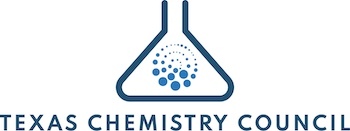Complete Story
11/26/2024
The EPA Does Not Limit Dioxins Dumped in Rivers by Plastic Makers. A Texas Plant is the Top Offender
Houston Chronicle | Rebekah F. Ward | Nov. 14, 2024
The EPA Does Not Limit Dioxins Dumped in Rivers by Plastic Makers. A Texas Plant is the Top Offender
Industrial facilities that produce plastics and their ingredients across the U.S. dump unlimited wastewater with nutrient pollution and cancer-causing toxins directly into waterways, according to a new analysis from the data-focused nonprofit Environmental Integrity Project.
The Dow Chemical Company plant in Freeport, south of Houston, tops the new list for its wastewater discharges. Last year, the sprawling chemical facility dumped 3.3 million pounds of nitrogen and over 500,000 pounds of phosphorous into the Brazos River. High volumes of nutrient pollution can cause fish kills and toxic algal blooms, and contaminate drinking water.
Dow Freeport, the biggest integrated chemical manufacturing plant in the hemisphere, also released more carcinogenic dioxins into a waterway than any other facility in the U.S. It was one of 30 Texas operations examined by the new report, all of which release pollutants into waterways with no state or federal caps.
"EPA is allowing this dangerous industry to increase the already unfair pollution and health burdens we experience in Houston and on the Texas coast," Senior Legal Director of Bayou City Waterkeeper Kristen Schlemmer said in a press statement.
Dow Chemical did not immediately respond to a request for comment on the report.
While the U.S. Environmental Protection Agency does regulate the discharge of some pollutants, it has not updated its rules for plastics plants to limit effluent levels for nutrient pollutants like nitrogen and phosphorous, or substances directly harmful to human health like dioxins, 1,4 dioxane and mercury. The new report found that the agency has not reconsidered limiting the release of dioxins since 1987.
"EPA decided not to limit dioxins at that time because it concluded that the methods used to detect the chemical in 1984 and 1985 were outdated by 1987," the report said. "It has never gone back since, even though better testing methods are now available."
The agency did not immediately respond to a request for comment.
The report identified 70 plastic production facilities which release waste directly into waterways, and said all but one of the plants had no limits in their permits for the discharge of nutrient pollution. More than 40% of those plants are in Texas.
While the Dow Freeport plant's record release of nitrogen, phosphorous and dioxins does not break the law, the facility has faced 15 violations for the discharge of other pollutants between 2021 and 2023, according to researchers.
"There's a huge sum of water that's coming out of this plant. And it's a mixture of a lot of different things," said Kira Dunham, research manager at the Environmental Integrity Project and the report's main author. "The facility discharges, on average per day, 725 million gallons of water; (it) is producing so many different products."
According to Dunham's research, more than two thirds of the total direct waterway pollution from plastic production in the U.S. is released in communities of color. Last year, the plants discharged almost 12 million pounds of nitrogen and phosphorus alone, changing the nation's rivers.

